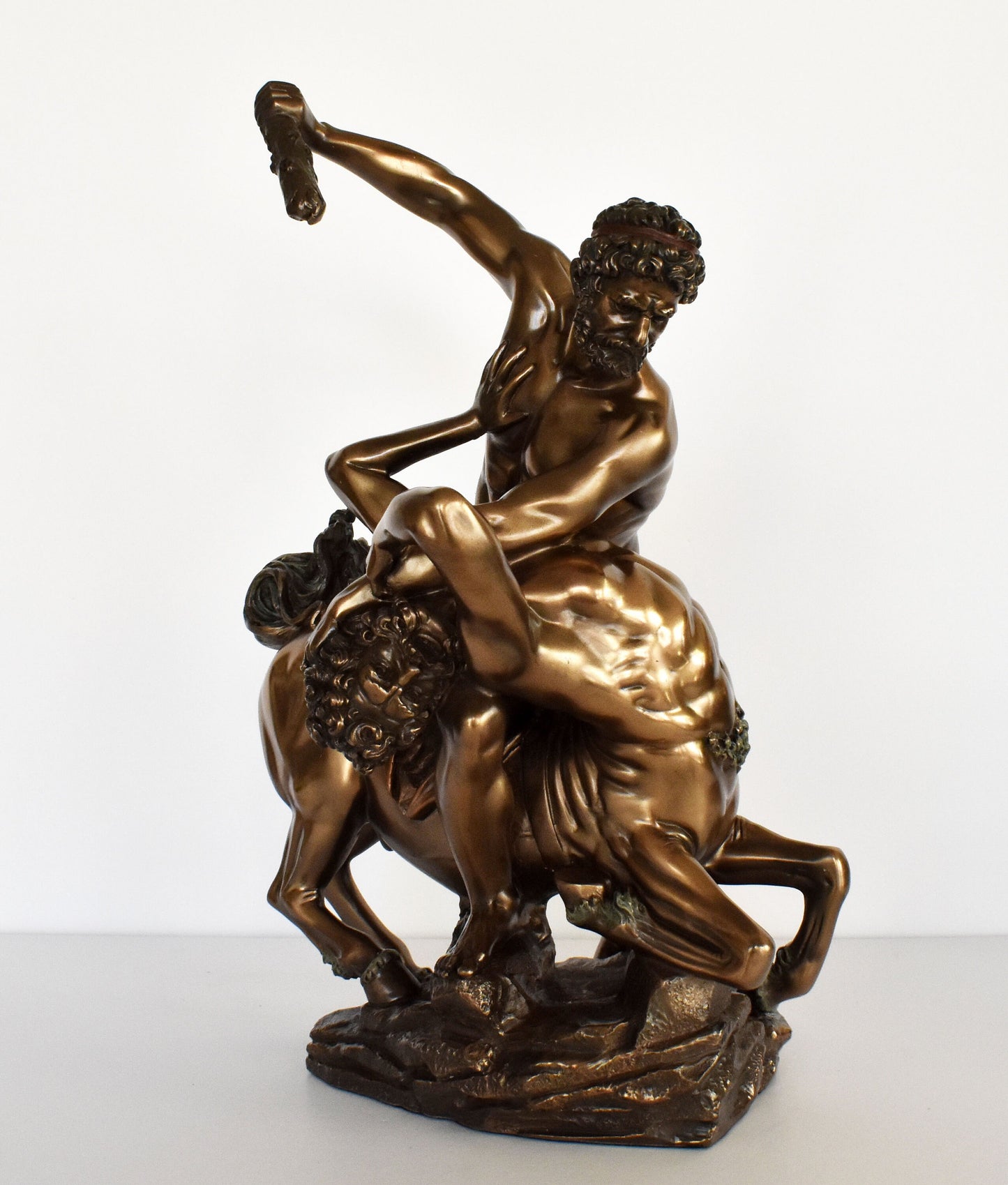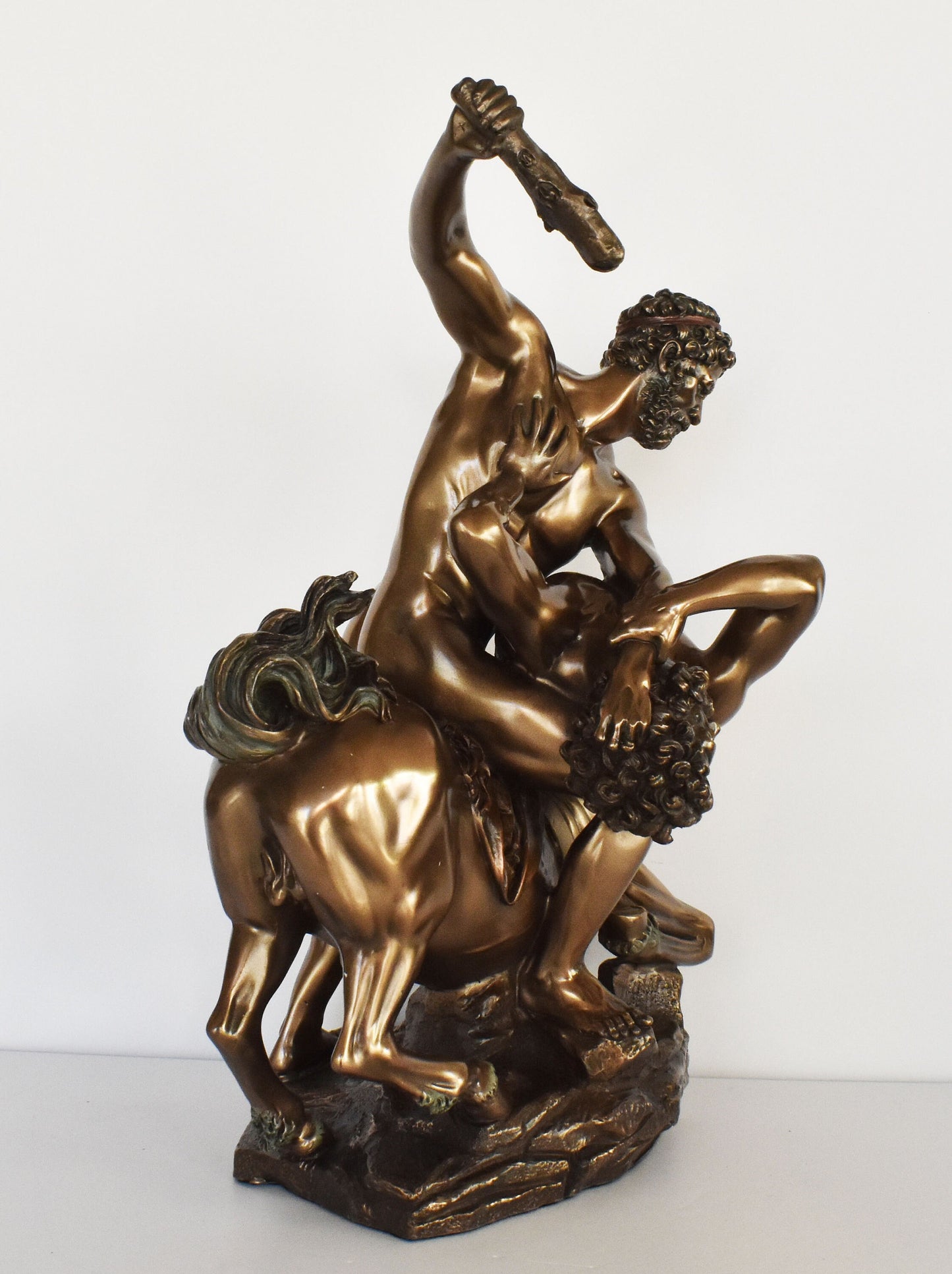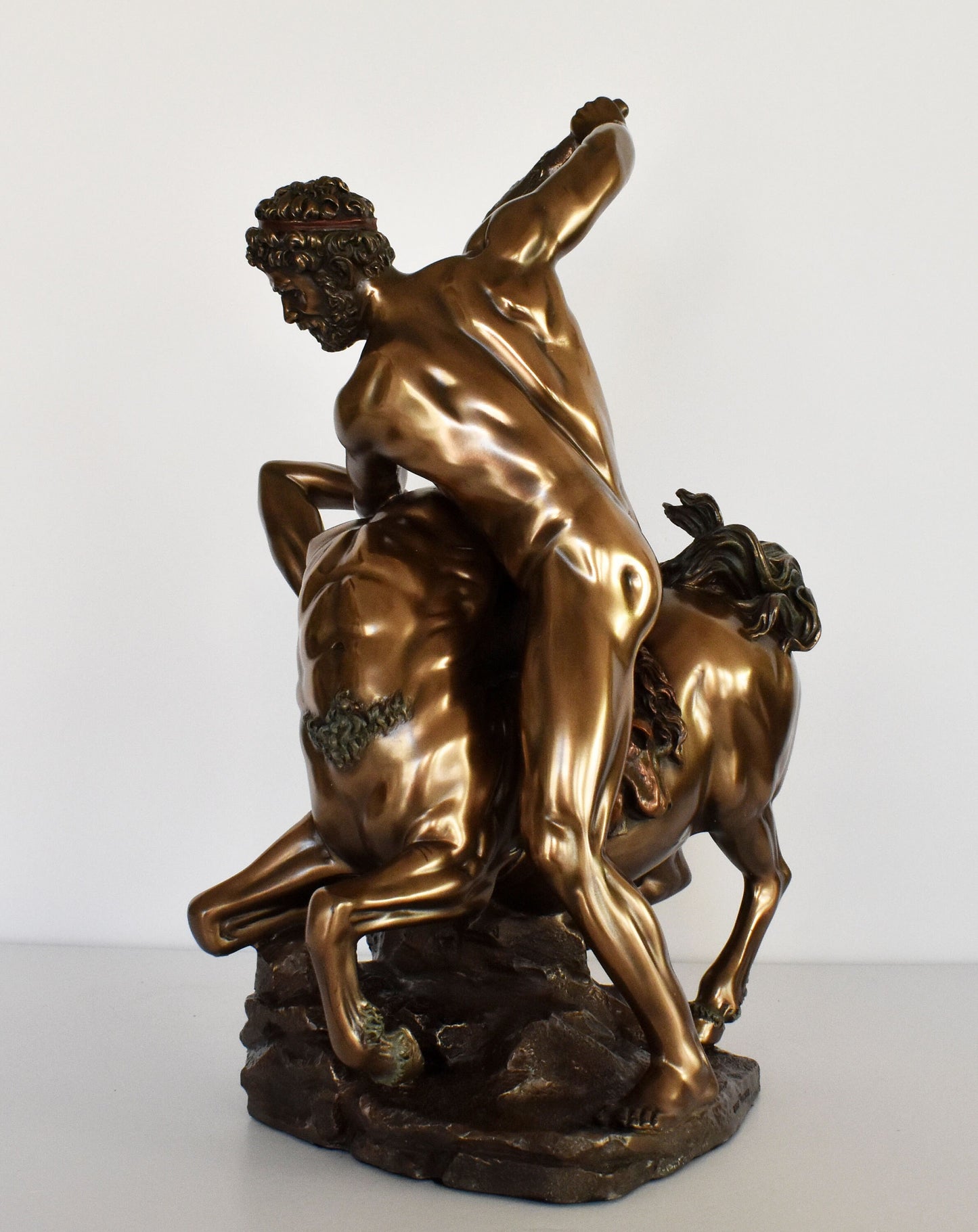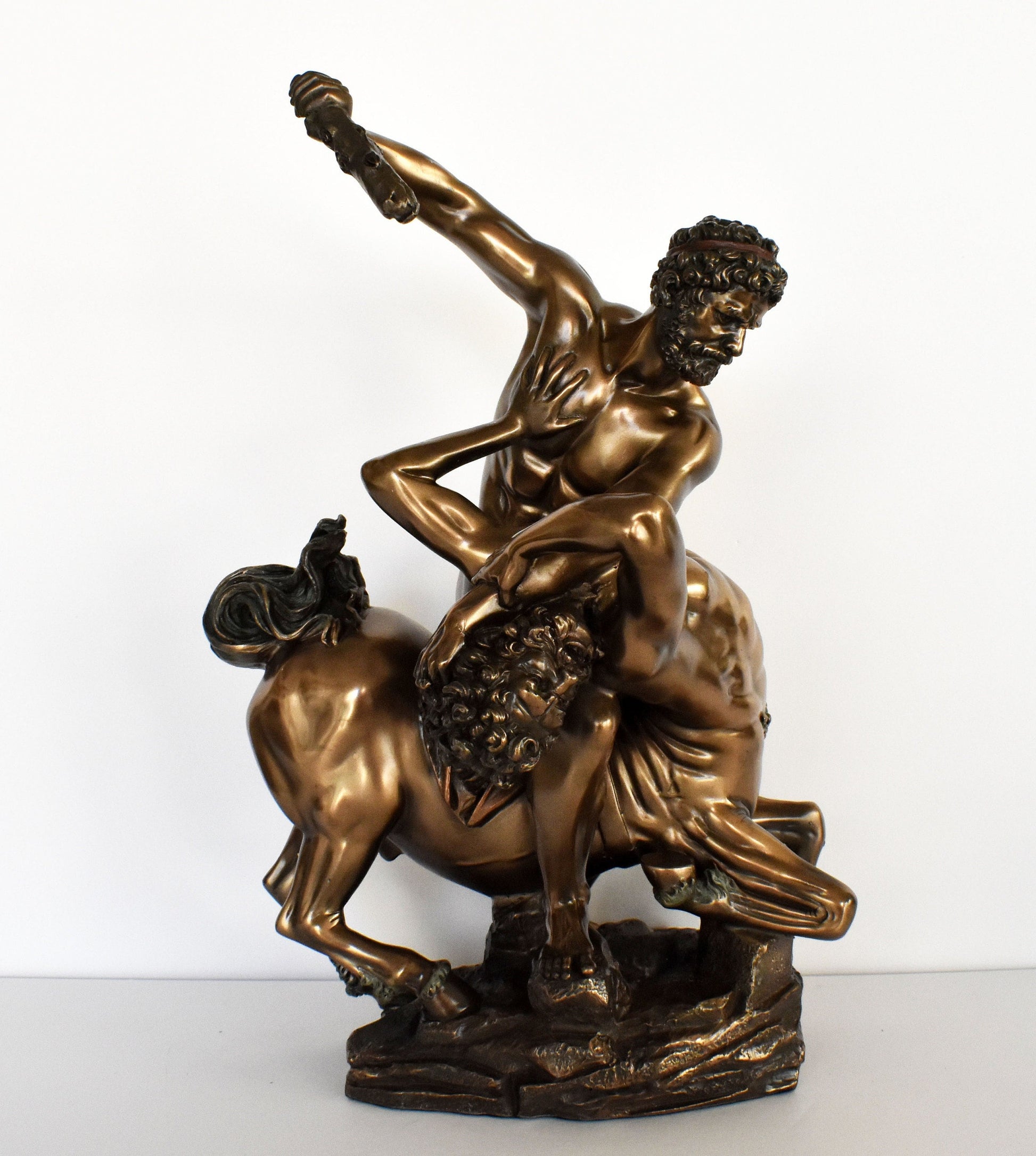Gallery Demeter
Hercules and Centaur Nessus - Replica of Giambologna - Loggia dei Lanzi, Piazza della Signoria, Florence - Cold Cast Bronze Resin
Hercules and Centaur Nessus - Replica of Giambologna - Loggia dei Lanzi, Piazza della Signoria, Florence - Cold Cast Bronze Resin
Regular price
€209,90 EUR
Regular price
Sale price
€209,90 EUR
Unit price
per
Tax included.
Shipping calculated at checkout.
Couldn't load pickup availability
Item Specifics
Condition: New
Material: Cold Cast Bronze Resin
Height: 29 cm - 11,4 inches
Width: 18 cm - 7,1 inches
Length: 16 cm - 6,3 inches
Weight: 2600 g
Giambologna, Hercules and Nessus (1599), Loggia dei Lanzi, Piazza della Signoria, Florence
Giambologna (Giovanni da Bologna, Jean Boulogne), Flemish-born Italian sculptor. He was the greatest sculptor of the age of Mannerism and for about two centuries after his death his reputation was second only to that of Michelangelo.
In about 1550 he went to Italy to study and spent 2 years in Rome. On the way back he stopped in Florence and was based there for the rest of his life. The work that made his name, however, was for Bologna - the Fountain of Neptune (1563-66), with its impressive nude figure of Neptune which he had designed for a similar fountain in Florence (Ammanati defeated him in the competition). Even before working on the fountain in Bologna, however, Giambologna had begun in Florence the first of a series of celebrated marble groups that in their mastery of complex twisting poses mark one of the high-points of Mannerist art: Samson Slaying a Philistine (Victoria and Albert Museum, London, c. 1561-62); Florence Triumphant over Pisa (Bargello, Florence, completed 1575); The Rape of a Sabine (Loggia dei Lanzi, Florence. 1581-82); Hercules and the Centaur (Loggia dei Lanzi, Florence, 1594-1600).
Hercules and the Centaur
The proto-Baroque tendencies of the late style of the Mannerist Giambologna are strongly apparent in this work. His movement away from the grace and elegance of the mannerist style and into the realism of the Early Baroque is complete in this group.
This marble group Hercules and Nessus was unveiled by Giambologna in 1600 at the Canto de' Carnesecchi in Florence. It was moved in 1842 from its original site to the Loggia dei Lanzi.
In Greek mythology, Nessus was a famous centaur who was killed by Heracles, and whose poisoned blood in turn killed Heracles. He was the son of Centauros. He fought in the battle with the Lapiths and became a ferryman on the river Euenos.
Nessus is known for his role in the story of the Tunic of Nessus. After carrying Deianeira, the wife of Heracles, across the river, he attempted to have intercourse with her. Heracles saw this from across the river and shot a Hydra-poisoned arrow into Nessus's breast. As he lay dying, as a final act of malice, Nessus told Deianeira that his blood would ensure that Heracles would be true to her forever, knowing the blood to be infected with the hydra's poison.
Deianeira foolishly believed him. Later, when her trust began to wane because of Iole, she spread the centaur's blood on a robe and gave it to her husband. Heracles went to a gathering of heroes, where his passion got the better of him. Meanwhile, Deianeira accidentally spilled a portion of the centaur's blood onto the floor. To her horror, it began to fume by the light of the rising sun.
She instantly recognized it as poison and sent her messenger to warn Heracles but it was too late. Heracles lay dying slowly and painfully as the robe burned his skin—either in actual flames or by the heat of poison. He died a noble death on a funeral pyre of oak branches. Heracles was then taken to Mount Olympus by Zeus and welcomed among the gods for his heroic exploits.









